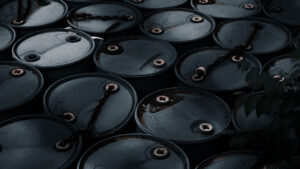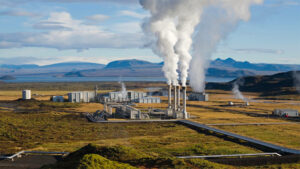A data dump by the International Energy Agency this weekend indicates that OPEC is enjoying its best compliance showing at least since the 1970s, if not ever. Over 90% of pledged oil production reductions have already materialized, with a few countries – most notably Saudi Arabia – overcutting. All together over the course of the past few months, total OPEC output is down just over 1 million bpd. The past two years of low-ish prices have hit non-OPEC producers as well, forcing reductions in their collective output of another 400kbpd. Stores of both crude and refined products have thus dropped across the world. No wonder oil prices have managed to hold strongly over $50 a barrel of late.
The question now is how positive will the impact upon the American shale industry be? In this there are no good guides. The nature of shale has evolved radically not simply since the industry’s modern inception in 2007 (ish), but even more so since the plunge in the price of crude began in mid-2014.
- Since then the most productive wells have become multilateral, with multiple horizontal spurs going off every vertical well shaft. Since each of these multilaterals is crafted by a single drill, the rig count watch is utterly irrelevant.
- Micro-seismic techs are enabling operators to take much — if not all — of the guesswork out of drilling and fracking. Such precision drilling means not only looking at the volume of steel used per well or per barrel of output is immaterial, but also that mass layoffs of rig workers can occur with no reduction in oil production.
- Water intensity per barrel of output continues to shrink as liquids pits are replaced wholesale by mobile water tanks. Less water usage means less cash flowing through the oil sector, gutting one of the last few “reliable” means of indirectly gauging end-output levels.
- When prices were low, many operators only fracked minimal bits of their wells to start them up — preferring to wait for a price recovery before fracking them up to full capacity. That time is now, but there is no unified data whatsoever on the size of this “fracklog.”
- Improved seismic techs enable operators to go back to previous wells and drill additional fairways. Such “indrilling” enables new production into old infrastructure, eliminating the need for new pipes, new leases or new negotiations, while generating new and sustained flows with the newest techs available.
Whereas technological changes impact national output figures over months to years in a sustainable way, these more mechanical characteristics give big one-off increases in weeks to months.
The only potential short-term ointment-fly I see is financing. Nearly all the shale operators who survived the price plunge of the past two years did so at least in part by borrowing. Even with prospects now brightening, many of them will find it difficult to take on yet more debt to expand operations. Yet even here things look surprisingly good. Capital flight out of Japan, China and the Eurozone continues to set new records. Shale bonds grant foreign investors a place to park their cash that is backed both by hard assets and revenue streams.
In my opinion shale’s next surge is going to not just hit much harder, but much sooner, than most expect. And it is likely about to get a lot better.
What do Donald Trump, Brexit, the Iranian Ayatollah, EU dysfunction, Japanese constitutional revisions and Chinese President Xi’s efforts to establish himself as emperor-of-all-he-sees-for-
This doesn’t “merely” mean that the output curve for the shale industry will be steeper now than in 2007-2013, but that adding a fresh million bpd to U.S. oil output in calendar year 2017 is a lazily conservative forecast. Shale isn’t just likely to overwhelm the entirety of OPEC’s cut, but the entirety of the global reduction in output all by itself.
And that’s just the start. By end-2017 all those new techs should have percolated throughout the shale patch. Full-cycle break-even prices for shale are already below $40. Give it a couple more years and $25 will be within reach.
And then the real shale revolution gets started.
As to what that looks like, sorry, but you’ll have to read the book. Check it out at this link.





